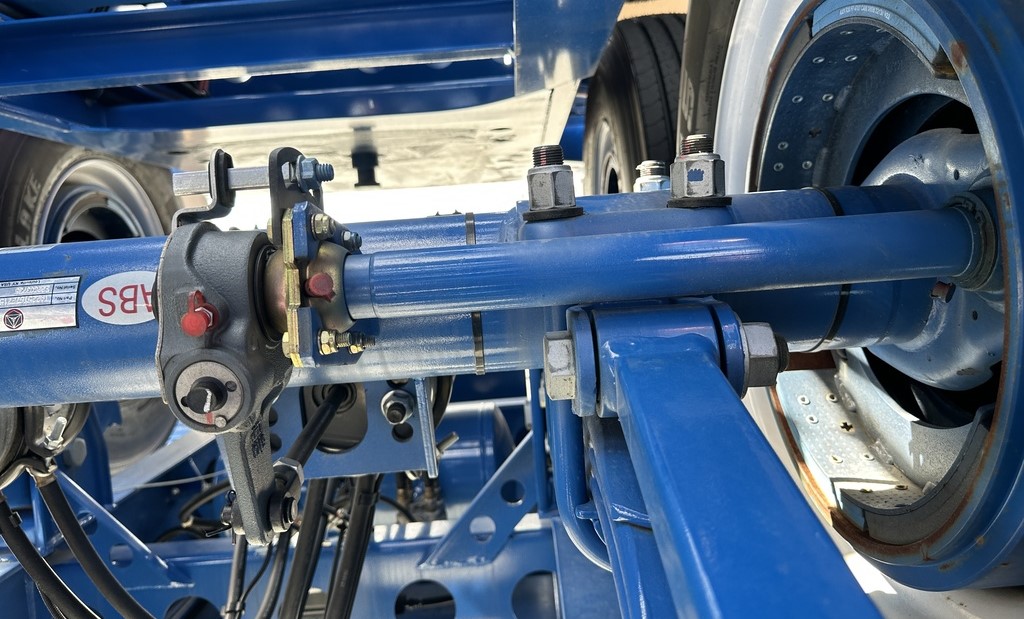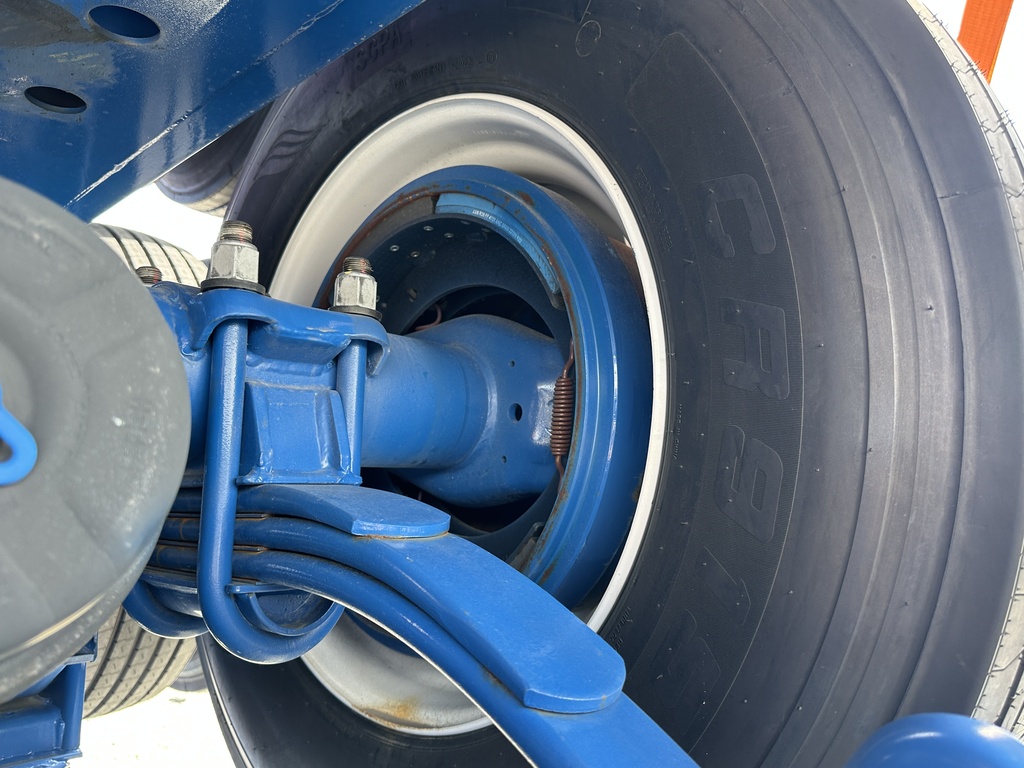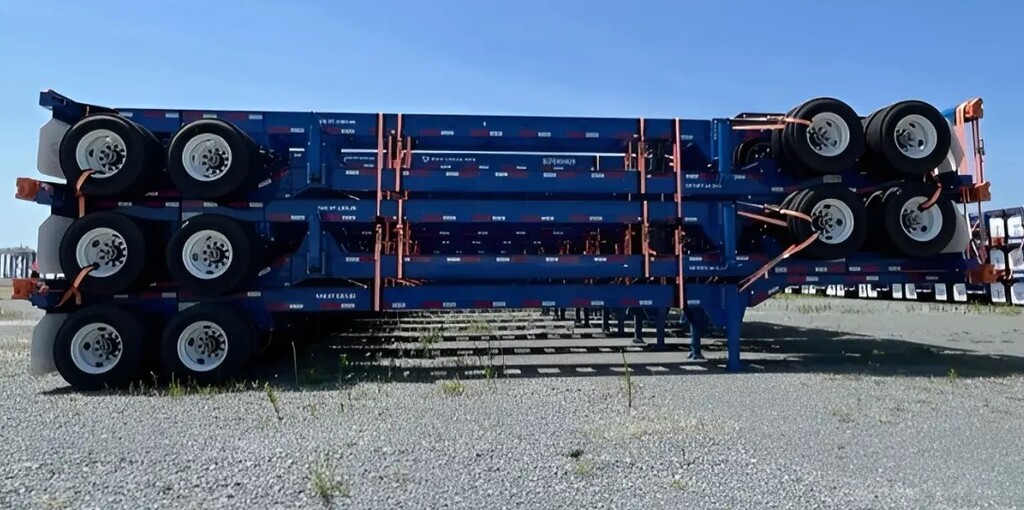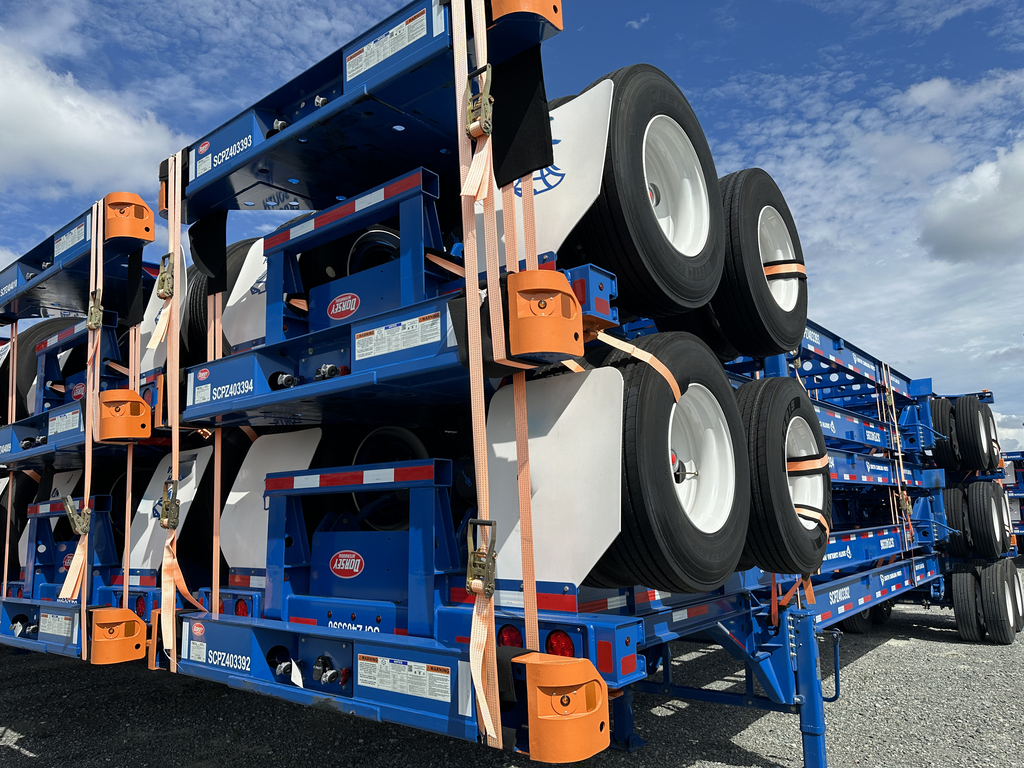Using transport containers across longer distances can face challenges depending on several factors. The process is complicated, particularly when dealing with complex logistics, tight spaces, and specialized handling equipment. That’s why careful planning is required to execute smoothly.
You can start planning how to transport your container by choosing tools to support the ease and safety of your load like chassis. It is a frame container trailer that is an essential part of the logistics chain, designed to facilitate fast and efficient cargo container transportation.
Chassis is used to move containers between shipping facilities, ports, and railyards. It is essential in transporting containerized goods and is at the heart of the shipping process.
To learn how the chassis’s role in making container transportation safer and easier, read this article until the end!
How Chassis Makes You Easier to Transport Containers
As the basic platform that supports the container, the chassis is an indispensable element in the transportation of goods. Container chassis are an essential part of the global supply chain. They increase efficiency and reduce waste by being made of lightweight materials that are durable enough to hold heavy containers.
With chassis, you can move containers without having to unload them first. Their primary function is to provide a stable and secure platform for transporting containers over long distances by road. These chassis are integral to the smooth flow of goods in the global supply chain.
Features of Container Chassis

Container chassis have several key features to make them suitable for carrying and handling containers, they are:
Twist Lock
Container chassis often feature twist locks or pins to attach containers, ensuring safe and secure transportation. Twist locks are commonly used and allow for quick attachment and detachment of containers.
Steel Frame Structure
Key features of container chassis include their robust structure, typically made of steel. It makes the chassis strong enough to support stability during transit. The steel frame also can withstand the weight and stress of loaded containers.
To prevent rust and ensure durability, the chassis frame is also coated as it is exposed to any kind of weather frequently.
Single or Tandem Axles
Depending on the size of the load and the design, the chassis can have one or two axles. They are critical for supporting the weight and ensuring proper distribution of the load.
Suspension System
Chassis have air suspension for a smoother ride. It goes particularly with heavier containers as it reduces wear on both the chassis and the container.

Wheels and Tires
Container chassis have large, durable wheels to support heavy loads and handle the rigors of transport. Many chassis also use dual tires on each side for better load distribution and stability.
Brake System
Most container chassis use Air Brakes for efficient braking when the vehicle is carrying heavy loads. They also have an Anti-lock Braking System (ABS) to improve safety by preventing the wheels from locking up during emergency braking.
Rear Bumper or End Frame
The bumper can reduce the risk of damage in case of collisions. While the end frame protects the container’s rear end during loading and unloading. It also provides a mounting point for the braking system.
Lighting and Reflectors
Container chassis has headlights, brake lights, reflectors, and turn signals to ensure visibility and safety during transport, especially when driving at night or in low visibility conditions.
Weight Distribution and Load Support
Container chassis can evenly distribute the weight of the container across the axles to ensure proper balance and reduce the risk of tipping, thanks to its strengthened rails and supports.
Adjustable Components
Extendable Chassis: Some chassis are designed to be extendable for larger containers, providing the flexibility to handle containers longer than the standard 40 feet.
Container Chassis Size

Chassis comes in a variety of sizes to accommodate different container types, but the most common sizes are based on the standard container dimensions, which are:
20’ Container Chassis
While these chassis are shorter than their 40’ counterparts, they are still highly effective for transporting smaller cargo. The 20’ chassis can only transport 20’ shipping containers.
In some cases, a 20’ chassis is compatible with non-standard containers, such as open-top containers, flat racks, or reefers (refrigerated containers), though the chassis must be compatible with the specific type of container.
It is 20’ (6.1 meters) long, 8’ (2.44 meters) wide, and 5 feet (1.5 meters) tall, which corresponds to the length and width of a standard 20’ container. A 20’ chassis can carry containers that generally weigh from 20,000-30,000 lbs. However, the maximum weight can range from 40,000-50,000 pounds or higher, depending on the design and materials used.
A 20-foot chassis typically has two axles that bear the weight of the container to distribute the load evenly to prevent overloading any one part of the system. It also has air suspension systems, which provide a smooth ride, especially when transporting heavier containers.
40’ Container Chassis
A standard 40’ chassis is one of the most widely used types in global logistics. It can carry up to 67,200 lbs, enough for a fully loaded 40-foot container, though it can sometimes also accommodate 45-foot containers with an extendable or adjustable frame.
A 40’ chassis is typically 40’ (12.2 meters) long, 8 feet (2.44 meters) wide, and 5’ (1.5 meters) high from the ground to the top of the chassis, which aligns with the width and length of a standard 40’ container.
The chassis is engineered to distribute the container’s weight evenly across its axles, helping to avoid overloading any one part of the system. Proper load distribution is critical for maintaining stability and safety during transport.
Typically, it has either two axles (standard) or occasionally three axles for greater weight distribution and load-bearing capacity. Most modern chassis have air suspension systems, which help reduce wear on both the chassis and the container. This is particularly beneficial when transporting heavy loads over long distances.
Is One Chassis Size Compatible for All Container Sizes?
Container chassis come in various specifications, including lengths to accommodate standard container sizes like 20’ and 40’. Weight capacity is another important factor determining the maximum load a chassis can bear without compromising safety.
Generally, one chassis is specifically designed for loading and transporting the same shipping container size. For example, a 40’ chassis for a 40’ shipping container and a 20’ chassis for a 20’ shipping container.
However, some are adjustable to carry different sizes by adjusting the twist locks or frame extensions.
Conclusion
A Container Chassis is the link between the container and the truck vehicle that allows a safe and efficient way to transport containers from one place to another. The primary advantage of using Container Chassis over other transportation is that it allows drivers to move containers without having to unload them first.
Transport containers over long distances between ports, distribution centers, 3PL warehouses, and terminals with our brand-new 40’ Container Chassis. Our experienced staff is ready to help you arrange the shipping of your container chassis to your requested location. Fill out our quote form to buy or rent from us!

